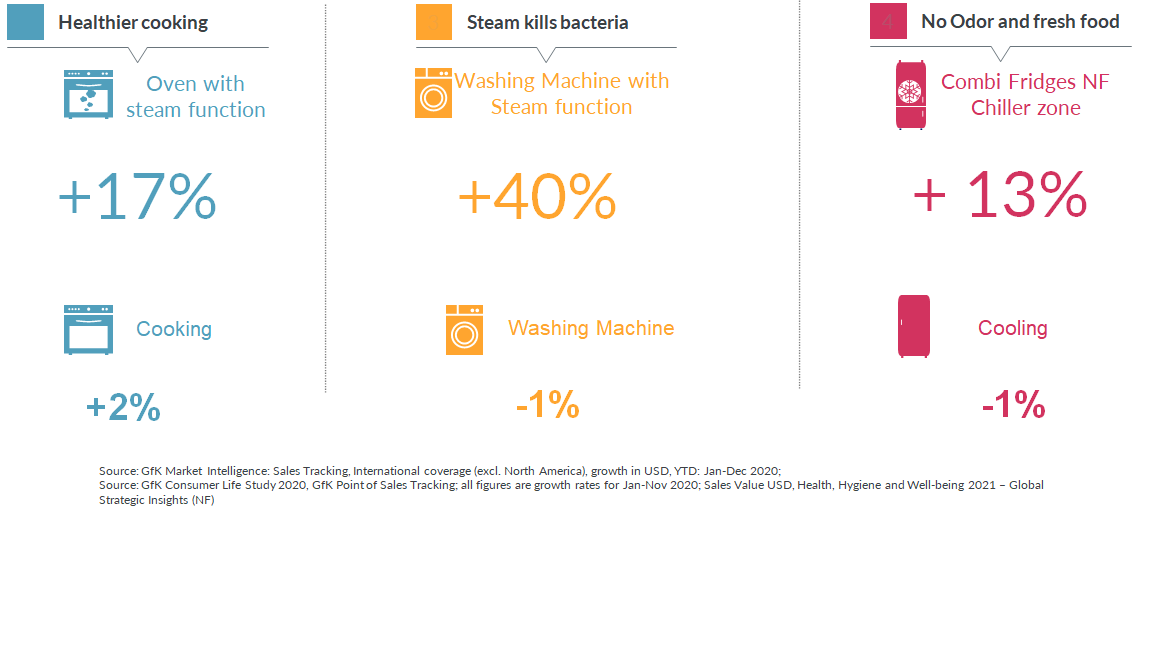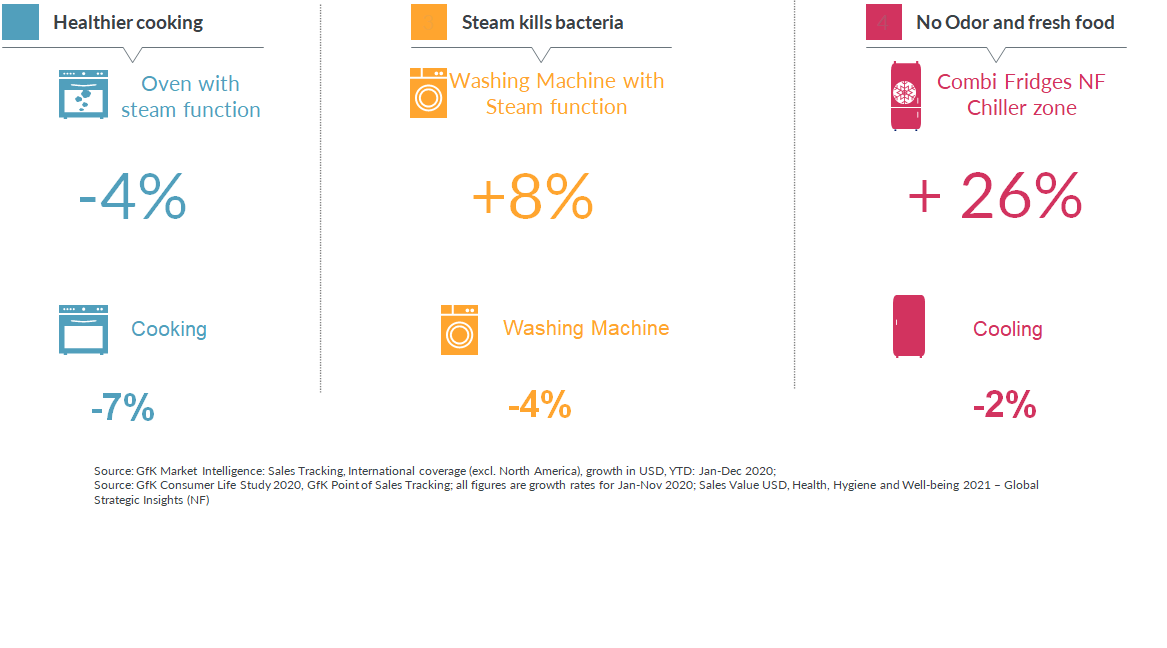The Covid-19 pandemic prompted people around the world to focus more closely on their health. As the link between underlying health conditions and Covid fatalities became clear, interest in preventative health and wellbeing also grew. Health and fitness rose to be ranked as the #4 personal value in 2020, up substantially from #12 in 2019 but even as the pandemic recedes it has risen further to be ranked as #3 personal value in 2022
This interest is driving stronger demand for health-related products and services, especially those associated with digital health intelligence, than in pre-pandemic years, with 44% of consumers saying they actively look for products and services that help them live a healthy lifestyle. This is up from 38% in 2015, showing how quickly the interest in health and wellbeing products has grown.

Source: GfK Consumer Life 2022 , Attitude to Life Top 2 responses
The halo effect of health benefits
Consumer desire to continue current habits but in a healthier manner means devices with additional health benefits have outperformed more standard products in their categories. This can be seen in strong demand for digital health technologies such as air fryers, which have outperformed the total fryers category substantially during YTD 2022. Hot air fryers grew by 45% from January to August 2022, on top of robust 76% growth during the same period in 2021.
Similar strong performance was seen during the first year of the pandemic in major domestic appliances with health features. For example, ovens with a steam cooking function grew by 17% compared with 2% growth in the cooking segment. And washing machines with a steam function grew by 40%, while the segment as a whole shrank by 1% during the FY 2020.
Sales value growth from January to December 2020

Sales value growth from January to August 2022

Due to overall high baselines from the previous year, coupled with demand deceleration in 2022 amid a cost-of-living crisis, there has been a decline in most MDA segments. However, appliances with a health-related feature have remained resilient. Between January and August 2022, the sales value of:
- Cooking appliances declined by 7% but ovens with steam declined by only 4%
- Washing machines declined by 4% but those with a steam function grew by 8%
- Cooling appliances declined by 2% but no-odor models with a fresh food chiller zone grew by 26%
Brands can leverage consumer appetite for multifunctionality and health benefits to justify higher prices, tapping into the trend for premiumization that has grown substantially in recent years.
Consumers take charge of their health with smart health monitoring devices
One trend has been the rise in digital healthcare monitoring devices. In the immediate response to the pandemic, digital thermometers grew by 400% in April 2020, as consumers rushed to identify early symptoms of Covid. Having had many purchases pulled forward during the pandemic, the segment dropped by 13% in the first seven months of 2022, exacerbated by overall market deceleration.
A similar trend played out with smart personal scales, which grew by 43% from January to August in 2020 and by another 18% in January to August in 2021, only to fall by 25% over the same period in 2022. Meanwhile, smart blood pressure monitors grew by 43% during 2020 and 42% in 2021, followed by a 24% fall in 2022. There was also strong demand during the pandemic for wearable technology in healthcare such as devices that offer multiple biometric sensors. Sport trackers that report blood oxygen levels grew by 53% in 2020 and saw triple-digit growth of 109% in 2021, before falling by 4% in January to August 2022.
Consumer interest in smart health monitoring devices remains high even if this is masked by dampened demand as a result of tougher overall market conditions in 2022. Consumers are looking to gain a more holistic view of their health and are willing to pay for devices that give them that insight on demand
.
Digital health technology is here to stay
The growth in smart health devices comes alongside the increasing adoption of digital health intelligence as epitomized by health monitoring apps. Between Q1 and Q2 in 2020, health and fitness app downloads grew by 46% worldwide, with millennials leading the charge. Consumers increasingly turned to fitness apps during the pandemic, with home workout apps featuring among the top apps downloaded.
How can products and brands benefit from the growing focus on health?
Although the direct impacts of national lockdowns have faded in most countries – a key exception being China where a zero-Covid policy continues to affect individuals and businesses in 2022 – the heightened focus on health remains and consumers are increasingly attracted to the benefits of digital mental health products or those that help them stay physically fitter and healthier. Health and wellbeing will be a strong driver of growth for brands that are able to tap into the trend. Here are some ways to do just that:
- Brands should communicate use cases that emphasize people’s ability to improve their health and prevent disease. This can apply across many categories and segments, so they should identify exactly how their product promotes a healthier lifestyle and update their messaging to reflect this.
- Brands can make high-performance features more appealing by highlighting the additional health benefits they provide. This effect can be seen in the air purifier market in China, where products with higher clean air delivery rates outperformed lower performance tiers. Marketing messages that portray premium products as a long-term investment towards good health help justify the spend for consumers.
- In product development, brands should consider adding features that enable healthier choices, as we have seen with ovens featuring steam functions. Consumers are attracted by the convenience of products that do more than one thing. With health a high priority, these features could elevate a product to a more premium tier.
- Smart functionality is growing in importance to consumers. Digital health companies that emphasize the benefit of gaining a holistic, real-time view of their health, will appeal to consumers looking to take control of their health. Interoperability of devices will be essential, as consumers build out their smart ecosystems.
![]()




